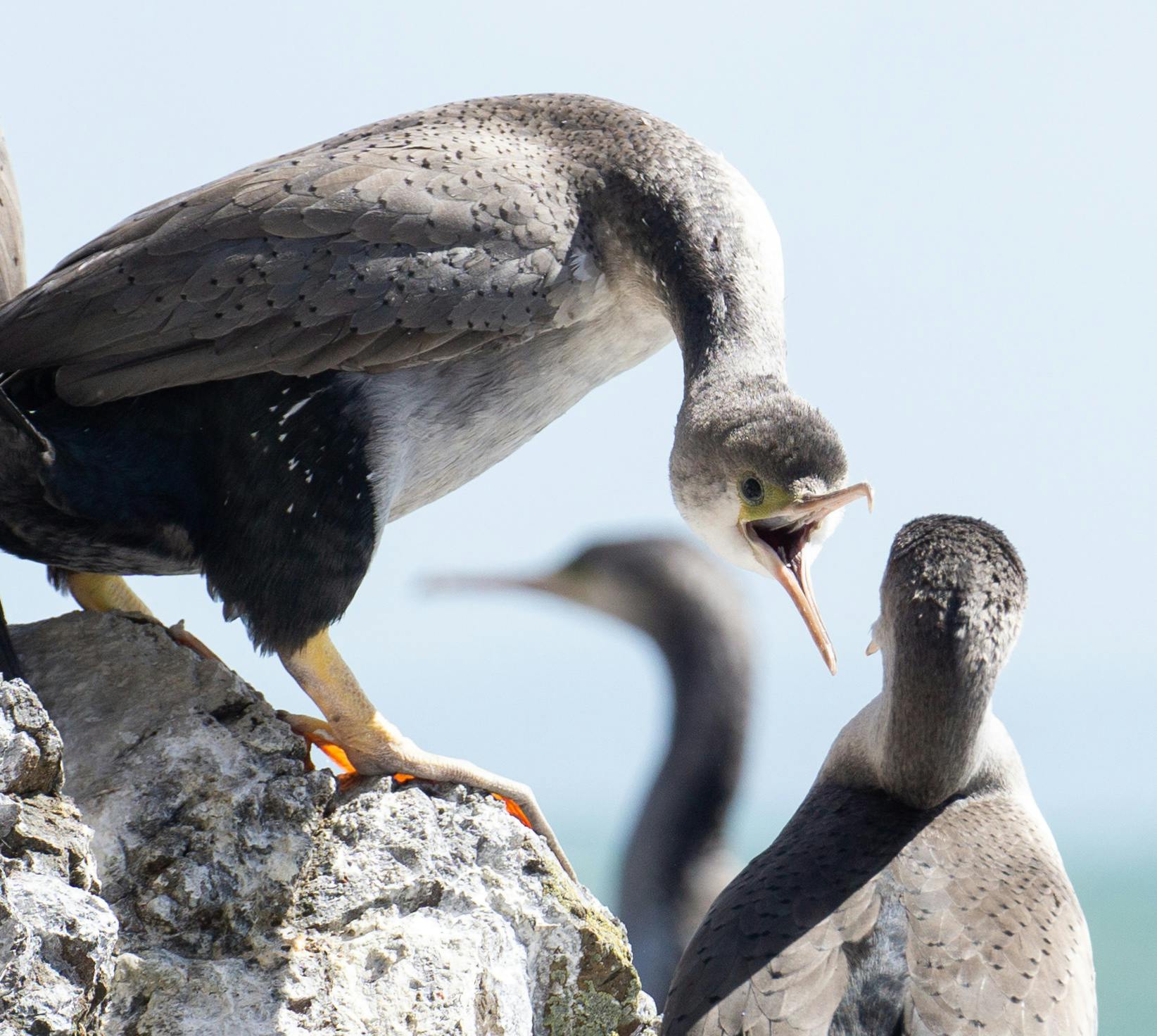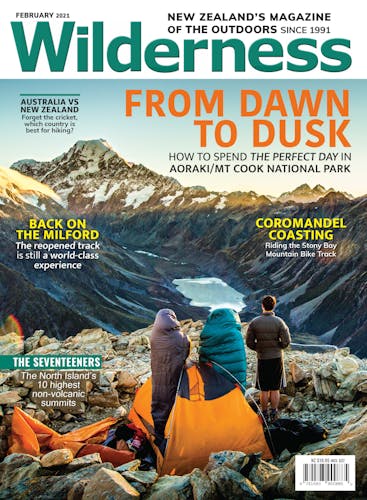This bird’s European name comes from the delicate black spots on its feathers.
The spotted shag (parekareka) is a largely marine-based cormorant that can be found roosting on cliff edges. It spends a lot of its time at sea diving for food and can hold its breath for up to 70 seconds.
Conservation status
Endemic (occurring only in New Zealand) species classified as ‘not threatened’.
Features
The spotted shag gained its European name from the delicate black dots that are found on the breeding adults’ feathers. These spots are located on the tips of the wing feathers, on the back, stomach, thighs and tail. Before the breeding season commences, the facial skin between the eyes and the bill turns a dynamic green-blue colour. Its build is slender and streamlined, and the beak is hooked and long – perfect for catching fish.
The plumage is primarily grey-blue, but the thighs and wings are darker. A distinct white stripe runs from the eye down the side of the neck, ending at the start of the wings.
The adult bird’s head and nape is adorned with a show-stopper double crest.
Call
It is generally silent, but will emit loud grunts while resting, roosting and nesting. During courtship, the male has a different call than the female.
Diet
Parekareka obtain all their food from diving in deep water, up to 16km from shore. They mainly feed on small fish, as well as marine invertebrates such as squid and plankton.
Nesting
Parekareka can breed in colonies as large as 700 birds. These colonies are made up of paired birds, as they are monogamous. They will build a platform nest of sticks, grass, and other vegetation on coastal cliff edges. Up to four eggs will be laid in this nest and incubation and chick rearing is shared between both birds. Chicks fledge at around 62 days. Breeding season is dependent on location and food availability.
Bird spotting tip
The parekareka can be found on or around all three islands in New Zealand, with populations found on the west coast of the South Island and the Otago coastal region, around Stewart Island, and in some parts of the North Island, such as Wellington Harbour and the Hauraki Gulf. When not out at sea foraging, parekareka can be found roosting on coastal cliff edges. Large colonies form outside of the breeding season, with up to 2000 birds roosting together. They can also be found in estuaries and inlets while feeding.
Feathery fact
Spotted shags will often have small stones or rangle (small gravel) in their gizzard, a muscular part of a bird’s stomach. The function of this rangle has been hotly debated, but it could be to aid food digestion or to create an inhospitable environment for gut parasites. Piles of these rangle stones can sometimes be found on beaches.








